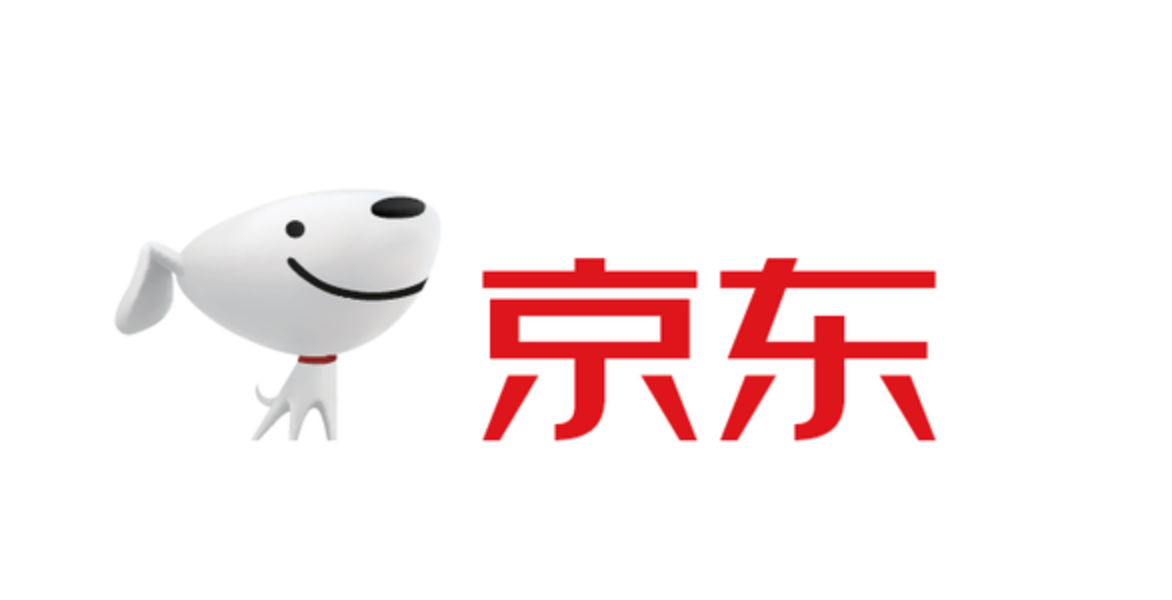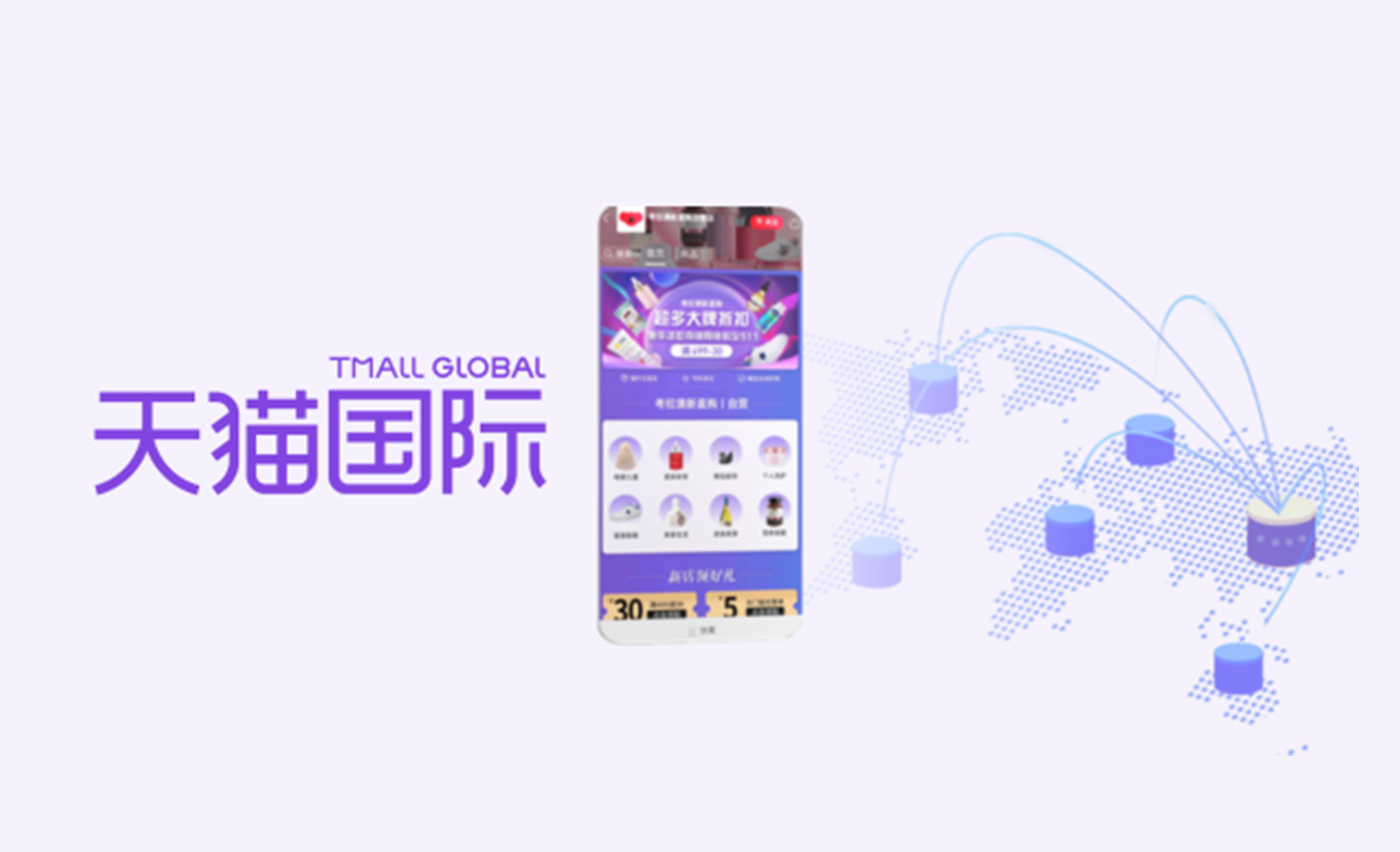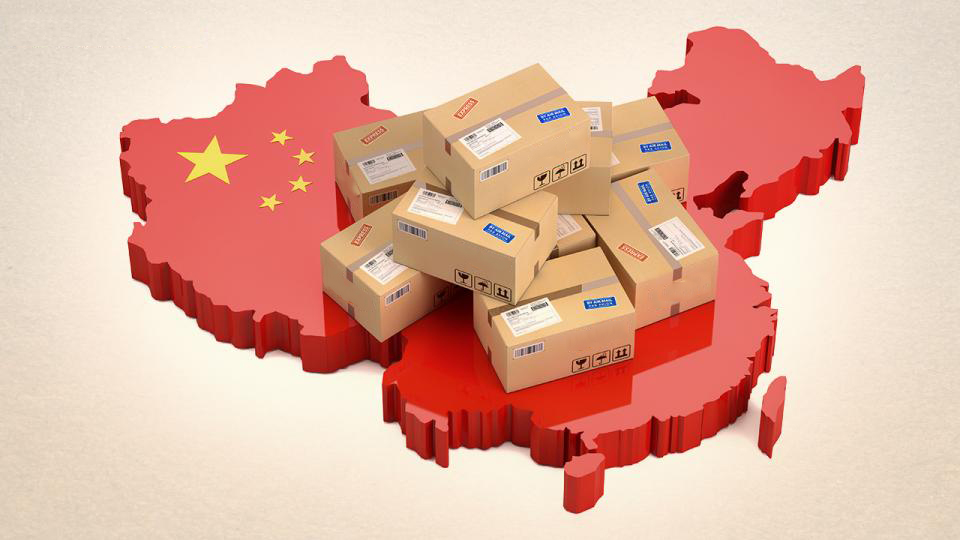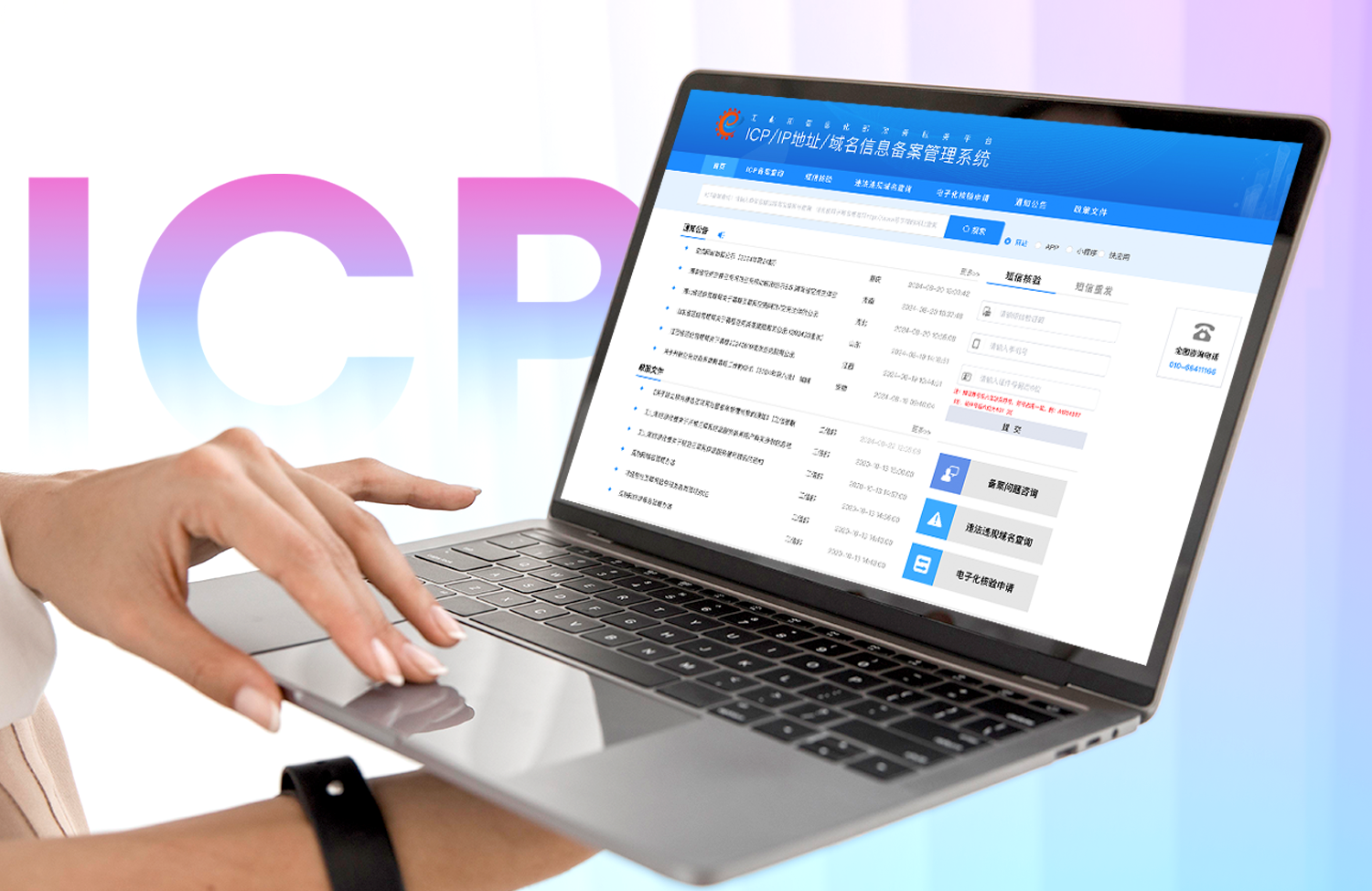In our recent blog article eCommerce Platform Comparison: Magento, Shopify, & moreFrom entry-level site builders to powerful eCommerce solutions, we ranked the top platforms, as well as their advantages and disadvantages.Comparing eCommerce Platform Cost, Usability & Features, we ranked Adobe Commerce as the best Cross-border eCommerce solution due to its excellent balance between implementation complexity and flexibility, with out-of-the-box features and that facilitate establishing cross-border independent websites.
When it comes to international eCommerce expansion, Adobe Commerce boasts powerful tools for businesses operating internationally thanks to its multi-store features, which allow brands to choose between managing multiple stores independently or through a single interface.
Thinking of choosing Adobe Commerce (Magento) for your eCommerce project? Check out our 2025 Buyer's Guide for Magento (Adobe Commerce): Costs, Features & AlternativesWe cover the ins and outs of Adobe Commerce (Magento) in order to help you make the best choice for your business, exploring key functionalities, use cases, and examples of successful implementations.Magento Buyer's Guide covering costs, alternatives, and use cases!
Selling to China Online with Adobe Commerce
With 47% of its retail sales being conducted online, China is by far the market with the highest eCommerce penetration in the world (Statista, 2023), which makes entering the Chinese market a big priority for many brands looking to boost eCommerce sales.
Having said that, we have to acknowledge that the Chinese eCommerce environment differs significantly from the international one. In short, Chinese consumers are accustomed to certain ways of making purchases online, and not following those practices may significantly hurt your China market entry strategy.
To help foreign companies in their China Localization projects, TMO Group has been working on building a fully localized China eCommerce solution since the release of Magento 2 in 2017 to use the full potential of Adobe Commerce (Magento) in China. In this article, we will take a look at 8 China eCommerce trends, break them down into what they mean in terms of eCommerce development, and share the experience we accumulated during the last few years offering eCommerce localization services.
1. Mobile-friendly Login
As users grow more and more accustomed to mobile phone use, they become more internet-savvy, but at the same time less patient. To cater to this crowd, it is no longer just a question of making your store look well on a phone’s screen. It is in huge part about having mobile friendly, smooth flow of operation, minimum input and transitions, and simple and intuitive interfaces.
One-time SMS access code
One prominent example of such a streamlined approach is “dynamic SMS authentication”, also known as “passwordless authentication”. You don’t need to remember your password to log in–you log in by receiving a one-time access code via the message to your phone. In the digital jungle with dozens and sometimes hundreds of sites users need to log into–no wonder SMS authentication grew extremely popular and became the de-facto standard for any brand selling online in China that requires users to log in.
One-click authentication
This method is used in native apps: it allows users to log in with their phone number by clicking literally one button. The one-click method is beginning to gain popularity as it offers the simplest possible workflow, does not require waiting for SMS, does not depend on your cellular coverage, and results in an increase in user conversion and retention.
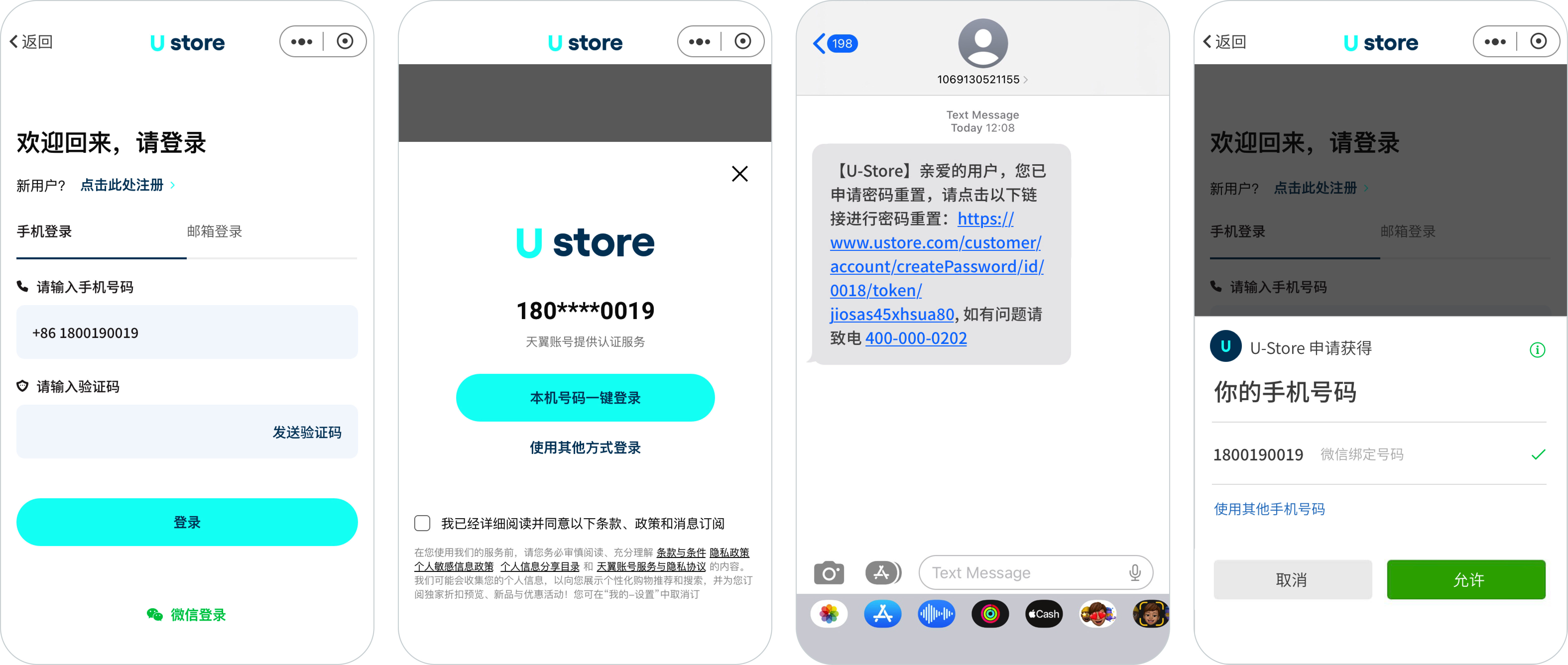
From left to right: simple login form for one-time SMS code authentication; SMS used for two-factor authentications; more complex registration form using SMS code authentication; one-click authentication in an app.
2. WeChat Mini Programs
WeChat is by far the most popular platform in China, and it is no wonder that brands use WeChat mini-programs (”apps within app”) as a base for their social interactions with customers.
Traffic originating at a brand's mini app (or mobile app, website, or any place the brand has full control over) is referred to as “Private Traffic”. “Private Traffic” is the opposite of “Public Traffic”, generated by search engines, paid ads, and marketplaces–places that brands may have much less control over.
WeChat Authentication
Similar to One-Click login in native apps, users can enjoy one-click authentication in WeChat mini-programs too. When a user signs up in the WeChat mini program, merchants receive such commonly used fields as the user’s name, profile picture, gender, and phone number, along with physical address, invoice title, and other information that will facilitate future eCommerce transactions.
Diverse Sharing Options
When it comes to sharing, WeChat provides several options: events, products, pictures - all these highly customizable items can be shared in users' “Moments” (public feed), shared in WeChat groups, or sent through direct messages to friends. It can greatly increase engagement for social marketing activities and promotions, allowing companies to boost eCommerce sales while tracking results accurately and in real-time.
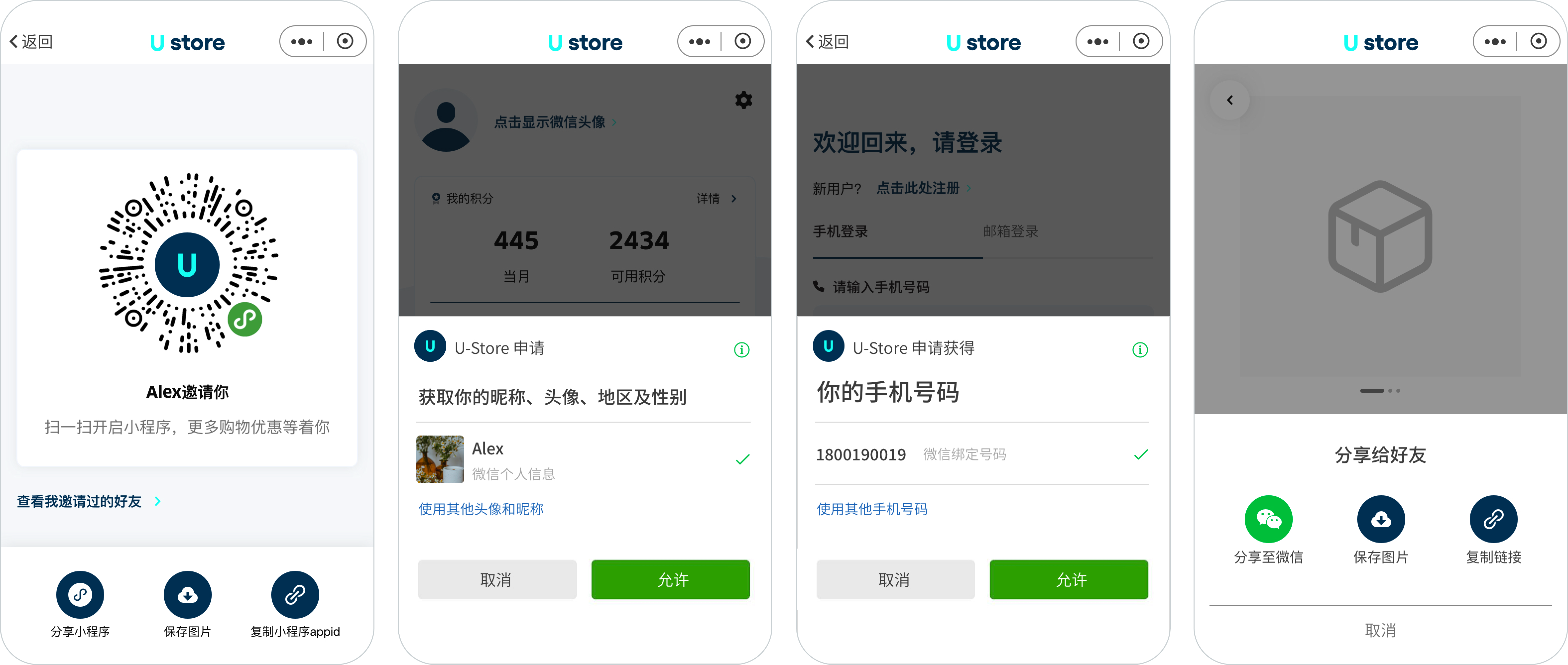
Left to right: WeChat mini program one-click login; an example of a profile page; product page sharing with embedded referral program functionality.
3. China-specific UI and Shopping Habits
Using Shopping Cart as a Wishlist
Unlike eCommerce users in the West, who empty their shopping carts every time a purchase is made, Chinese customers use their shopping carts differently. In China, users do not always add products to their shopping cart because they want to purchase it right now. Often they add products to the cart because they would like to make a purchase sometime later, or just entertain the idea of buying, or simply because they liked the item. This way, in China, a shopping cart is a hybrid of wishlists, favorites, and bookmarks.
Taobao allows users to have up to 120 items in their shopping carts, and many would put this space to good use. When it is time for a transaction, only a small number of items are checked out, with the bulk remaining in the cart. “Emptying the shopping cart” for someone is a generous gesture, something one can do, for example on Valentine’s Day. Alibaba’s Jack Ma once emptied, that is paid for, the entire shopping carts of the Chinese Women's Volleyball team as a sign of appreciation, after they won Gold in the 2018 Asian Games.
Payment Time Countdown
Sometimes, after the user puts an item in the cart, a countdown may appear, gently urging them to finish the transaction until the time runs out. This way the customer makes sure he gets the item if it is in limited supply. Alternatively, the transaction can be rewarded with a coupon for a future purchase. This type of encouragement is quite popular during big promotional periods.
User Account Dashboard
Chinese users expect their profile page to be an “information center”, to feature a detailed list of pending orders, broken down by their delivery status, history, loyalty points, etc. Social sharing can also be initiated from the profile page.
Post-purchase Reviews
Unlike Adobe Commerce’s default approach, where any registered user can comment on an item, in China comments are reserved for people who completed a purchase. Their reviews, together with uploaded photos of received goods, are a credible source of information for potential customers.
Specific Input Option
Address input fields should be convenient for entering Chinese-specific fields, which can easily become complex with provinces, cities, compound names, lanes, and other information.
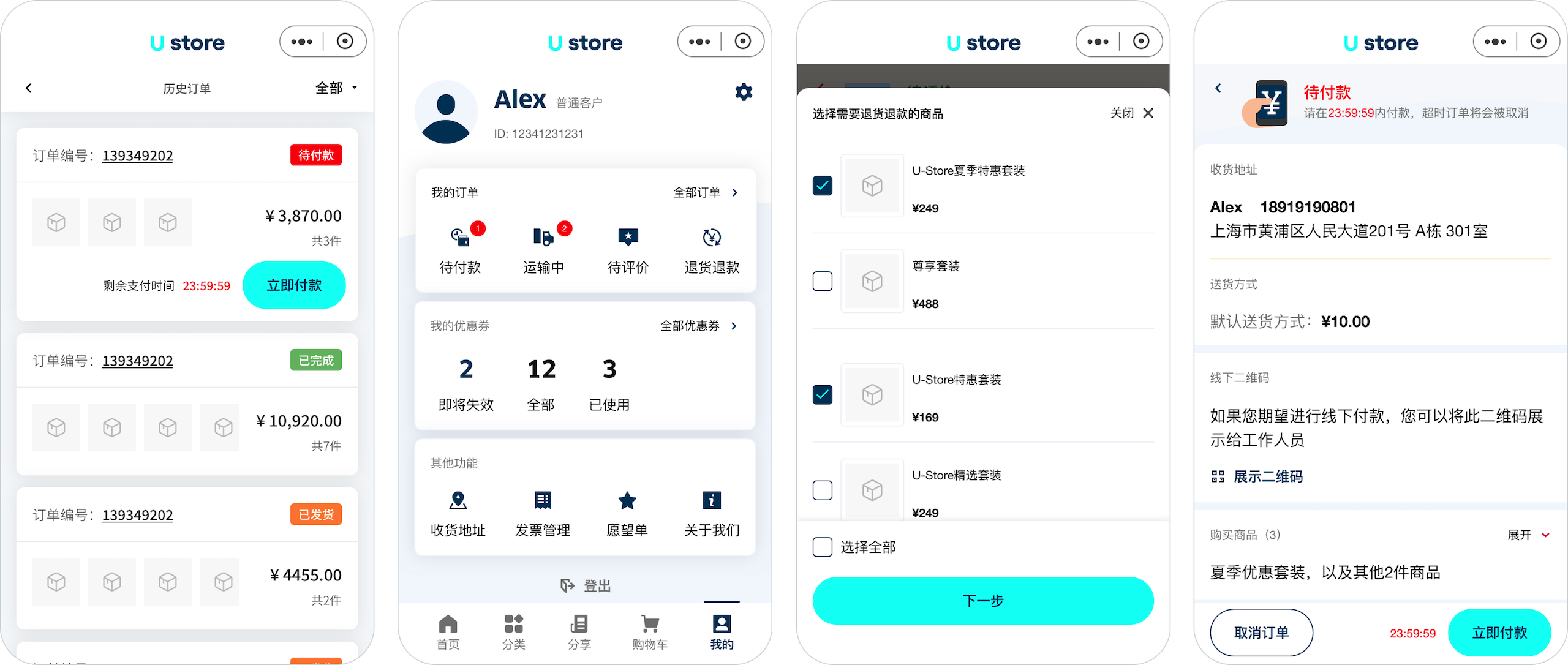
Left to right: partial checkout; user profile page; countdown to payment; order confirmation page.
4. Promotion methods
Group and Micro Group Buying
In addition to the usual promotional methods already implemented in the standard version of Magento, Chinese customers are fond of social promotional activities. One example of such activities is group purchases: merchants can offer higher discounts to groups of 3-5 buyers, so users find ways to join forces with other customers, looking for a bargain. This type of promotion works not only for friends and acquaintances: members of various WeChat communities would often arrange such group purchases. There are several popular WeChat groups and apps created with the sole purpose of getting better deals with group discounts.
Flash Sales
Another popular type of promotion is a flash sale or, if you translate the Chinese name literally, “instant kill sale”. These are the promotions that offer huge discounts, which only last a relatively short time (minutes to hours). This encourages users to react faster and generates buzz around the brand.
Coupon Wallet
Coupons are a popular way of promoting goods among Chinese consumers. Using Adobe Commerce, you can generate various types of coupons, and then upload them to customers' “coupon wallet”, motivating them to make even more purchases.
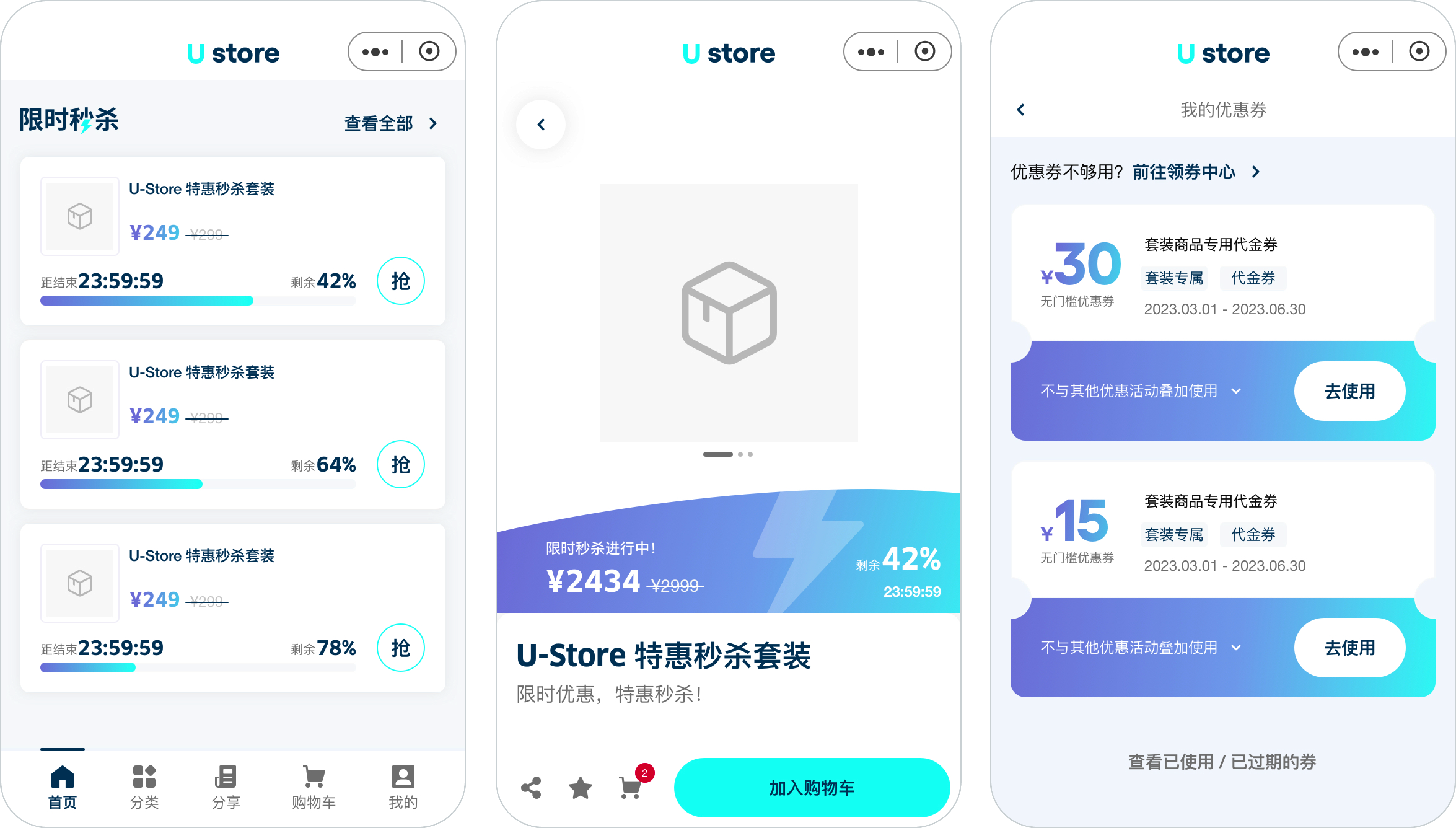
Left to right: various flash sales, note the countdown times to the end of the promotion; flash sale’s details page; a collection of coupons in the user’s “coupon wallet”.
5. Logistics Tracking
These days Chinese customers expect fast, reliable delivery of their purchases. Any eCommerce operating in China should be ready to provide real-time tracking of the shipping, its current status, and estimated delivery time. This way you can ensure your business ends up with more happy customers and fewer unnecessary complaints. TMO Group supports logistics tracking of more than 50 most popular Chinese delivery service providers.

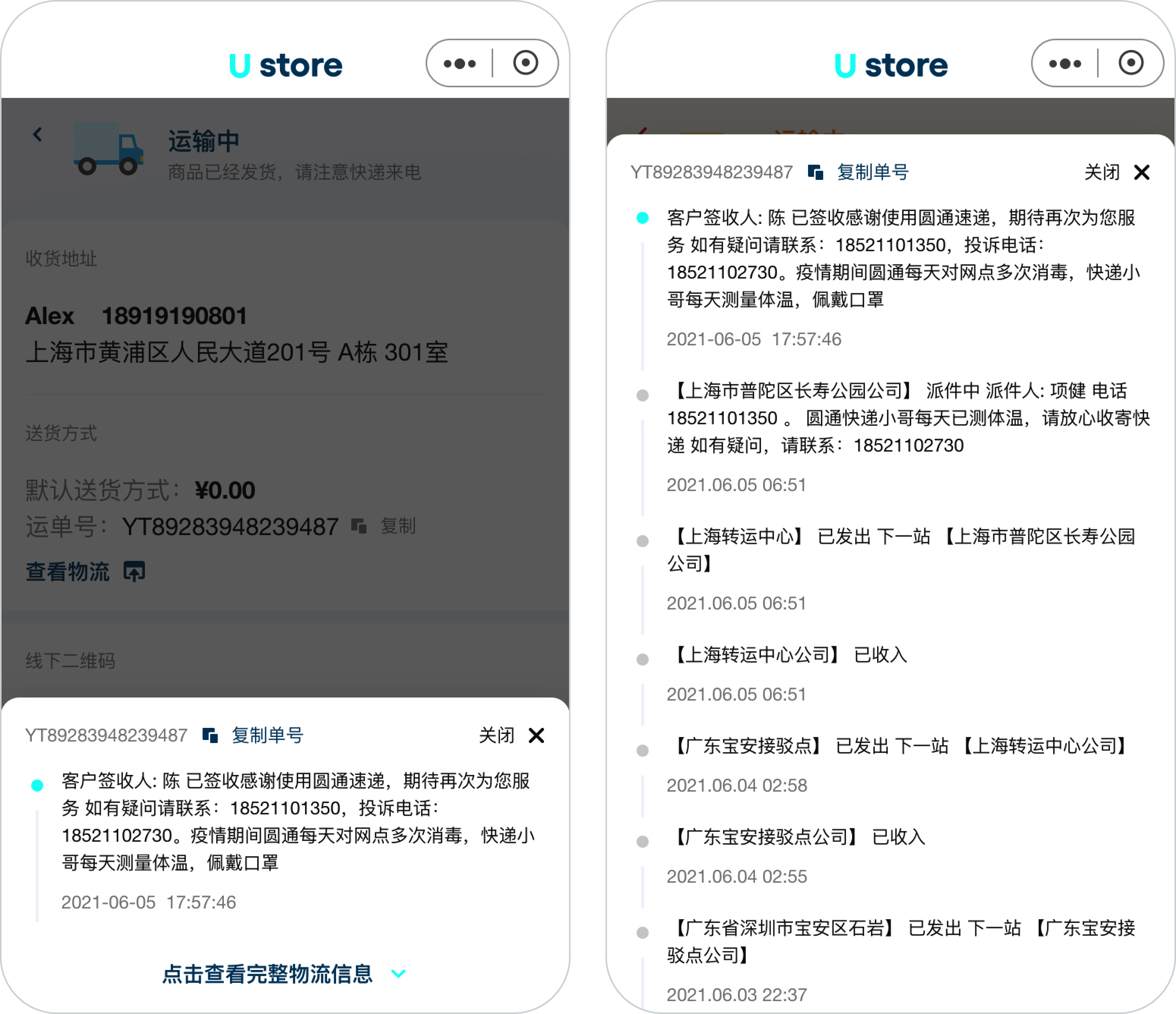
Example of a logistics tracking page.
6. Return and Exchange Policies
If the purchase does not satisfy them, Chinese customers are looking for a convenient return and exchange policy. Users expect to be able to notify merchants that the return is being made, state the reason, and upload a picture to support the claim. They should also be able to choose the convenient way of returning the goods: choose a delivery service provider, select a pick-up time, etc. All these increase the chance of recurring purchases, even if something goes wrong.
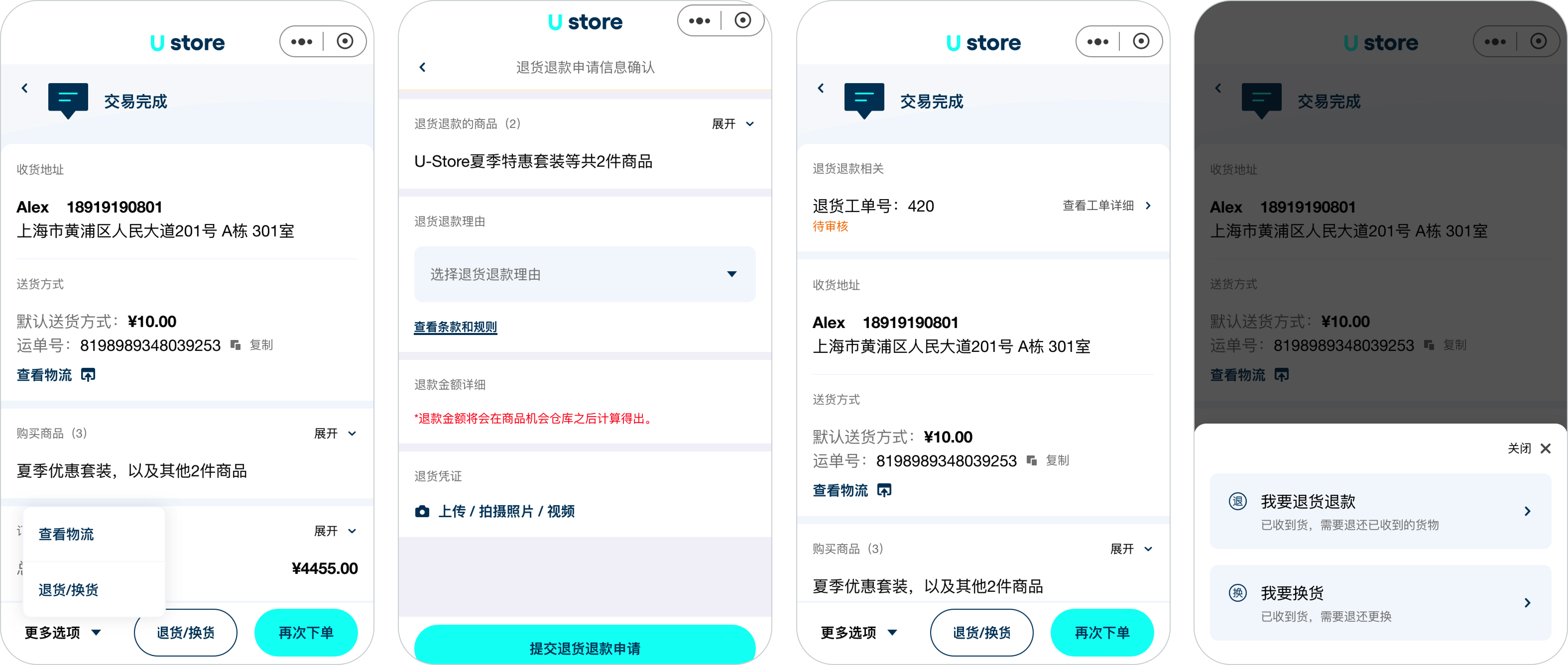
Left to right: example of return goods page; choosing the delivery service for the returns; return status page.
7. Fapiao (Invoice) Service
Even though “fapiao” is usually translated as “invoice”, it works quite differently from invoices in the Western world. Fapiao is issued by national or local tax authority, but provided by the seller. It is a receipt and tax payment tracker rolled into one. Fapiaos are used frequently in Chinese daily life - as a proof of purchase, base for an expense claim, tax deduction, and so on. Not issuing fapiaos is illegal under Chinese law.
A few years ago, electronic fapiaos were introduced, and although they are not very popular in brick-and-mortar locations yet, they simplify life a lot for online businesses.
There are a few types of fapiaos: individual, corporate, and special corporate: each with its set of fields to be filled and rules to be followed.
TMO Group provides functionality to automatically issue and manage fapiaos inside Adobe Commerce, greatly reducing the necessary effort to keep up with official requirements.
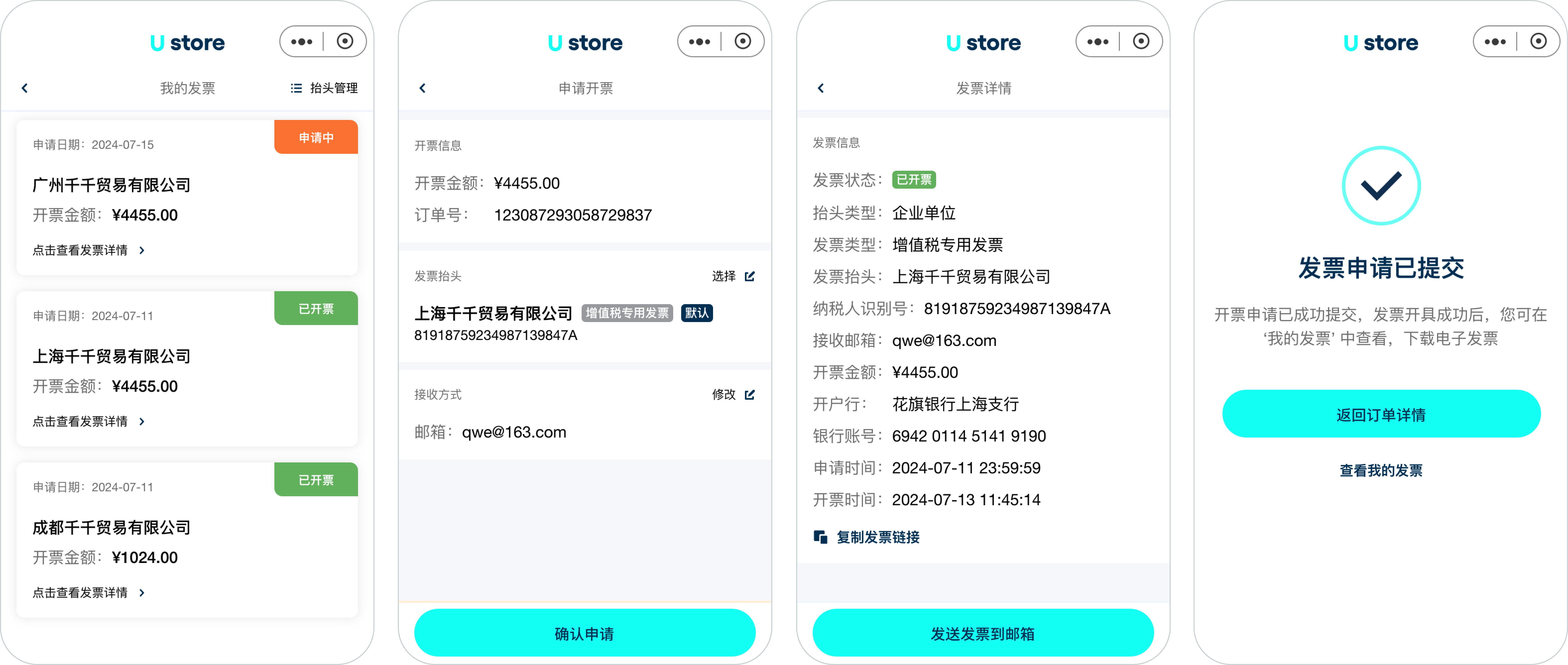
Examples of applications for electronic fapiao (left) and regular fapiao (right).
8. Live Streaming
One of the most recent eCommerce trends in China is the surge in live streaming as a popular online marketing tool. Many eCommerce sites are now connected to various streaming platforms. WeChat mini programs, too, offer seamless integration with Tencent streaming services.
Stores would use streams to showcase new products, offer shopping guides and tours, and, most importantly, connect with customers in a real-time experience - resulting in higher sales numbers.
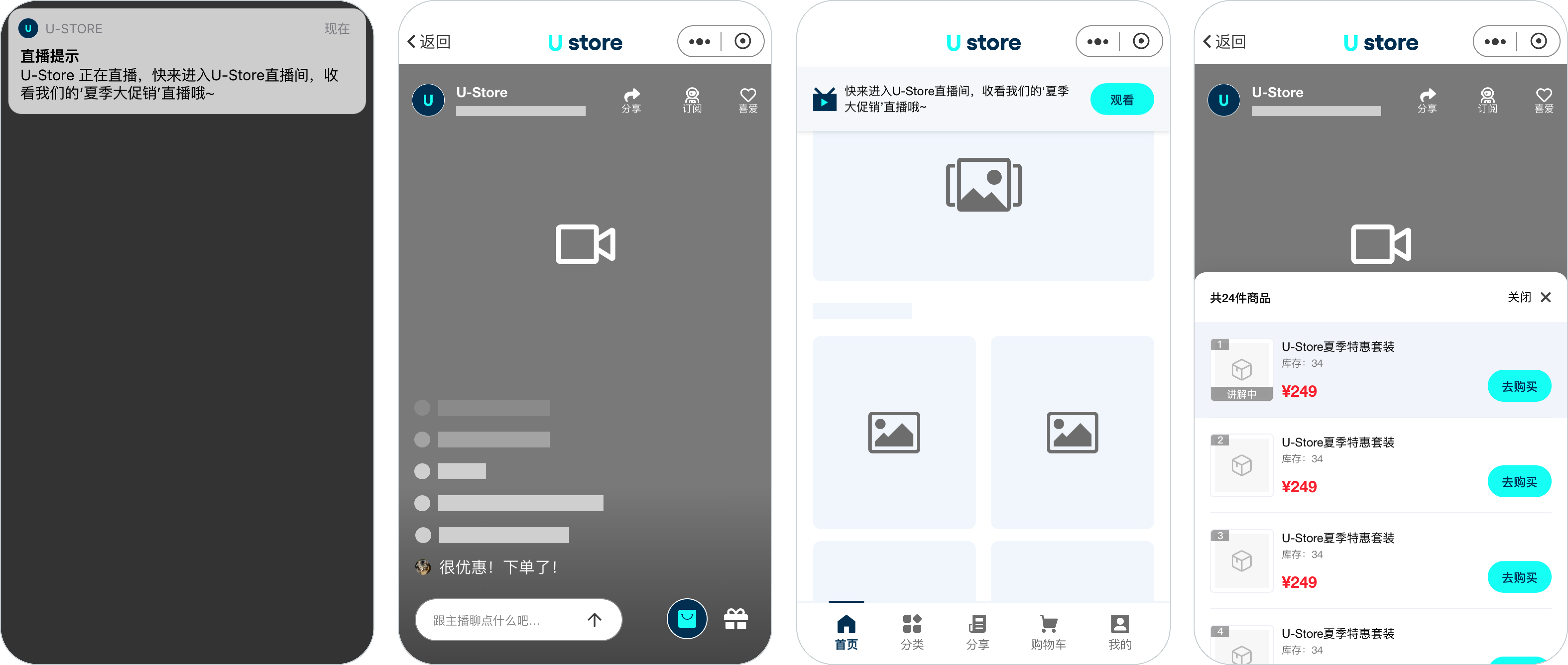
Left to right: Home page of Tencent’s streaming platform; announcement of an upcoming broadcast; stream in progress; list of products introduced in the stream; products ready to be placed in the shopping cart with one click.
China Localization Extensions for Adobe Commerce
These are just some of the features that you should consider while developing your eCommerce for market entry into China. Thankfully, there are quite a lot of localized plugins for Adobe Commerce (Magento) China that can increase functionality of your eCommerce project even further, such as Baidu, Alipay, or ByteDance extensions. We will discuss them, and many others, in our future installments on Chinese localization articles, here at TMO Group Blog. Stay tuned!
If you’re looking for a China eCommerce agency to enhance your cross-border eCommerce growth, TMO Group has rich experience offering eCommerce localization services. Reach out to us to kickstart or boost your cross-border eCommerce project!
As a certified Adobe Commerce Partner in China, we provide integrated solutions for the entire eCommerce value chain and strongly advocate data-driven and user-centric experiences building & operating true omni-channel solutions, from gathering market intelligence, business conceptualization and planning, to developing the solution and implementation, and managed services.




